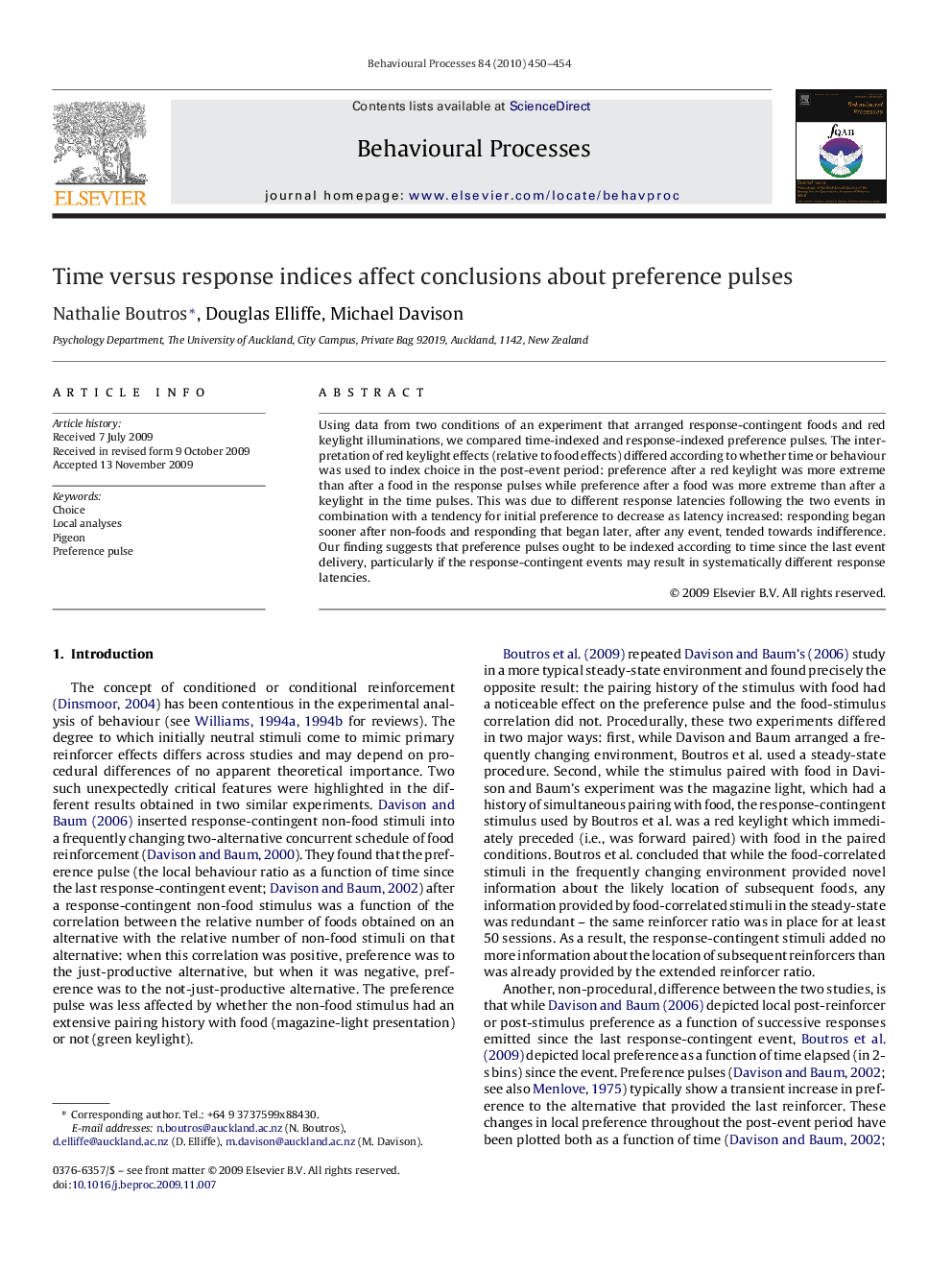| Article ID | Journal | Published Year | Pages | File Type |
|---|---|---|---|---|
| 2427134 | Behavioural Processes | 2010 | 5 Pages |
Using data from two conditions of an experiment that arranged response-contingent foods and red keylight illuminations, we compared time-indexed and response-indexed preference pulses. The interpretation of red keylight effects (relative to food effects) differed according to whether time or behaviour was used to index choice in the post-event period: preference after a red keylight was more extreme than after a food in the response pulses while preference after a food was more extreme than after a keylight in the time pulses. This was due to different response latencies following the two events in combination with a tendency for initial preference to decrease as latency increased: responding began sooner after non-foods and responding that began later, after any event, tended towards indifference. Our finding suggests that preference pulses ought to be indexed according to time since the last event delivery, particularly if the response-contingent events may result in systematically different response latencies.
